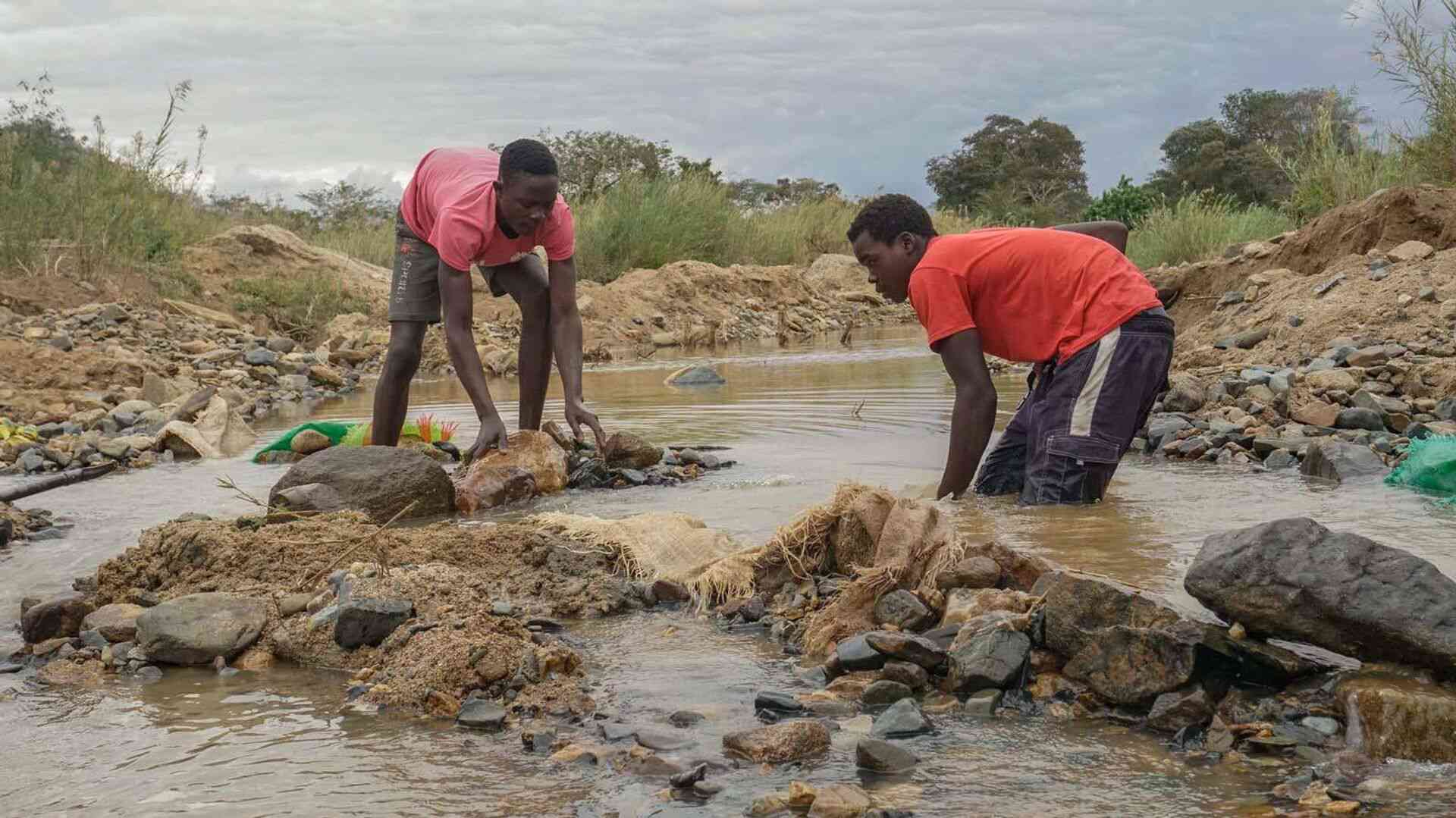
August is notorious for strong winds that pick up large plumes of dust. Combined with the blooming jacarandas and abundance of pollen, this dusty haze can create the perfect storm for seasonal ailments, particularly respiratory illnesses. A drier, hotter climate will only exacerbate the situation, putting the health and wellbeing of an entire population at risk. What does this mean for the country’s labour force?
Zimbabwe is a low emitter of the greenhouse gases linked to climate change and global warming.
But the country will still bear the brunt of the impacts of climate change. The 2023 World Risk Index puts Zimbabwe as highly vulnerable to climate change, with a low adaptive capacity.
That vulnerability is manifest in more intense and more frequent extreme weather events such as cyclones and floods, unreliable rain patterns, heatwaves and droughts.
This is not just a theory. Cyclone Idai in 2019 and the El Niño induced droughts in 2015, 2023 and 2024 were exacerbated by climate change. Although a welcome respite from the heat, even the recent showers in some parts of the country this past September are unusual. But heat is particularly concerning.
As a 2021 submission to the journal Sustainability puts it: “climate change is expected to result in increased temperature and a more variable precipitation pattern, including high frequency and intensity of extreme weather events with severe implications for human welfare.”
The latter is especially significant for Zimbabwe’s plans for economic growth and development.
With a largely agro-based economy, Zimbabwe’s economy is heavily dependent on predictable weather patterns.
- Matiza’s widow in estate wrangle
- SA insurer targets Zim after US$2.4 million payouts
- Addressing climate change the green building way
- Hit hard by storms and forest loss, Zimbabweans building stronger homes
Keep Reading
World Bank reporting shows the sector is responsible for almost two-thirds of economic output and four fifths of employment. But it’s not just agriculture: manufacturing, tourism and even the informal economy are all connected to climate change.
Food vendors, hair salons and transport operators all rely on a stable climate. Climate change threatens to upend this established rhythm.
Will people adapt and continue to work? Or, like Covis-19, will workers be forced to put down their tools under unbearable weather conditions? Simply put, what would happen to Zimbabwe’s economy if it simply becomes too hot to work?
Health impacts
Extreme heat has significant impacts on working conditions especially for those who work outside. It can lead to heat exhaustion, heatstroke or death.
Prolonged exposure to extreme heat can lead to cancer and chronic health conditions, especially cardiovascular, respiratory and kidney-related diseases.
As it stands, excessive heat affects over 90% of Africa’s workforce, and is responsible for over 7% of workforce injuries. Zimbabwe is a climate hot spot in southern Africa, with a 2-2.5°C increase in average air temperature over the past century (1901 to 2024). In short? You’re not imagining it. Zimbabwe is getting hotter. This means more workers will be affected, with more workplace injuries and more heat related illnesses and medical emergencies. These impacts aren’t just for labour intensive sectors such as agriculture and industry.
A research project by High Hopes in Mount Darwin shows working in extreme heat affects healthcare workers and their ability to assist vulnerable populations. Indoor and office workers are not immune from extreme heat either.
Without sufficient climate controls and safety protocols, people working indoors can still suffer from heat-related illnesses. And as Zimbabwe’s average temperatures continue to rise as expected, more people are more vulnerable to the effects of extreme heat.
Economic productivity
The government’s ambition to turn Zimbabwe into an upper middle income country by 2030 relies on consistent growth towards economic transformation.
Central to this transformation is the state of the country’s workforce and infrastructure. When a workforce is not able to fully function due to compromised health, the economy suffers.
Extreme heat is set to cause an estimated US$2,4 trillion in annual losses worldwide by 2030. With reduced working hours and limited physical capacity, economic activity declines.
Then there is the infrastructure necessary for economic activity. Heat puts pressure on energy and water systems, causing power outages and water cuts.
Despite an increase in investments in renewable energy, Zimbabwe’s energy output is still low, with the energy shortage costing the country an estimated 6,1% of its annual GDP.
Without sufficient adaptation policies in the energy sector, extreme heat will only make the energy situation worse.
Reduced productivity and compromised infrastructure will have a ripple effect. For example, fewer outputs in the agricultural sector means less food production.
This in turn will increase the price of food and basic commodities. For workers in the sector, this means slashed wages.
With agriculture employing over 50% of Zimbabwe’s total workforce, a reduction in the sector will likely extend to the businesses and financial institutions that rely on the growth and development of the sector. The 2024/2025 drought impacted horticultural exports, with the Ministry of Lands, Agriculture, Fisheries, Water and Rural Development reporting a 27% drop in output for the season.
With Zimbabwe aiming to increase its exports, a reduction will hit everyone’s pockets. And with the potential for increased energy costs due to more disruptions, extreme heat can spell disaster for the economy.
Solutions
But this nightmare scenario doesn’t have to become a lived reality. Adaptation and resilience building are essential to preparing the workforce for extreme heat.
As the Climate Change Management Bill continues to make its way through the legal system, it would be valuable to include specific provisions that protect workers from the effects of climate change.
This could be the first step in establishing a national standard for responding to extreme heat. Raising awareness on the dangers of extreme heat in workspaces is another step.
Conscientising workers and employers on the significance of extreme heat on health and productivity will raise awareness amongst the general public, and enable business leaders and policymakers to make informed decisions.
Improving energy generation and updating infrastructure ensures access to reliable electricity for economic production. Other solutions include changing work timetables to ensure people avoid working during the peak hours between 12pm and 3pm.
Adding in more breaks avoids burnout and stress, with workers having more time to hydrate and cool down before resuming activities.
Adopting hybrid models where people work from home during heatwaves means cooler working environments and less heat-related mental and physical stress. A 2025 study shows home workplaces are cooler than offices, with people less likely to suffer from overheating.
Zimbabwe is only going to get hotter. With that comes the fate of the country’s labour force and developmental ambitions.
Recognising the danger that extreme heat faces also opens the door to creating and implementing long lasting, sustainable solutions.
As the hot and dry season continues, the effects of extreme heat will become increasingly important to the country’s growth and progress.
- Muzenda is a writer and analyst. These weekly New Horizon articles, published in the Zimbabwe Independent, are coordinated by Lovemore Kadenge, an independent consultant, managing consultant of Zawale Consultants (Pvt) Ltd, past president of the Zimbabwe Economics Society and past president of the Chartered Governance & Accountancy Institute in Zimbabwe (CGI Zimbabwe). — [email protected] or mobile: +263 772 382 852.











